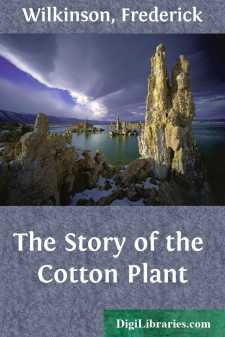Categories
- Antiques & Collectibles 13
- Architecture 36
- Art 48
- Bibles 22
- Biography & Autobiography 813
- Body, Mind & Spirit 142
- Business & Economics 28
- Children's Books 17
- Children's Fiction 14
- Computers 4
- Cooking 94
- Crafts & Hobbies 4
- Drama 346
- Education 46
- Family & Relationships 57
- Fiction 11829
- Games 19
- Gardening 17
- Health & Fitness 34
- History 1377
- House & Home 1
- Humor 147
- Juvenile Fiction 1873
- Juvenile Nonfiction 202
- Language Arts & Disciplines 88
- Law 16
- Literary Collections 686
- Literary Criticism 179
- Mathematics 13
- Medical 41
- Music 40
- Nature 179
- Non-Classifiable 1768
- Performing Arts 7
- Periodicals 1453
- Philosophy 64
- Photography 2
- Poetry 896
- Political Science 203
- Psychology 42
- Reference 154
- Religion 513
- Science 126
- Self-Help 84
- Social Science 81
- Sports & Recreation 34
- Study Aids 3
- Technology & Engineering 59
- Transportation 23
- Travel 463
- True Crime 29
The Story of the Cotton Plant
Categories:
Description:
Excerpt
CHAPTER I.
ORIGIN, GROWTH, AND CHIEF CULTIVATED SPECIES OF COTTON PLANT.
In the of this little work is a picture of a cotton field showing the plants bearing mature pods which contain ripe fibre and seed, and in stands a number of bobbins or reels of cotton thread, in which there is one having no less than seventeen hundred and sixty yards of sewing cotton, or one English mile of thread, on it. As both pictures are compared there appears to be very little in common between them, the white fluffy feathery masses contained in the pods shown in the one picture, standing in strange contrast to the strong, beautifully regular and even threads wound on the bobbins pictured in the other.
From cotton tree to cotton thread is undoubtedly a far cry, but it will be seen further on that the connection between the two is a very real and vital one.
Now it is the main purpose of this book to unfold the wonderful story of the plant, and to fill in the details of the gap from tree to thread, and to trace the many changes through which the beautiful downy cotton wool passes before it arrives in the prim looking state of thread ready alike for the sewing machine or the needle of seamstress.
Fig.2.—Bobbins of cotton thread.
Remembering that the great majority of the readers of this little book must of necessity be quite unaccustomed to trade terms and technical expressions, the author has endeavoured to present to his readers in untechnical language a simple yet truthful account of the many operations and conditions through which cotton is made to pass before reaching the final stages.
Nature provides no lovelier sight than the newly opened capsules containing the pure white and creamy flocculent masses of the cotton fibre as they hang from almost every branch of the tree at the end of a favourable season.
And how strange is the story of this plant as we look back through the centuries and listen to the myths and fables, almost legion, which early historians have handed down to us or imaginative travellers have conceived. There is, however, every reason to believe that in the far distant ages of antiquity this plant was cultivated, and yielded then, as it does now, a fibre from which the inhabitants of those far-off times produced material with which to clothe their bodies.
It will not be considered out of place if some of the early beliefs which obtained among the peoples of Western Asia and Europe for many years are related.
Like many other things the origin of the Cotton plant is shrouded in mystery, and many writers are agreed that it originally came from the East, but it will be seen later on that equally strong claims can be presented from other countries in the Western Hemisphere. Many of us have been amused at the curious ideas which people, say of a hundred years ago, had of the Coral Polyp.
Even to-day children may be heard singing in school,
"Far adown the silent ocean
Dwells the coral insect small"!
Not a few of the early naturalists believed that the Coral was a plant and while living in the sea water it was soft, and when dead it became hard...!


